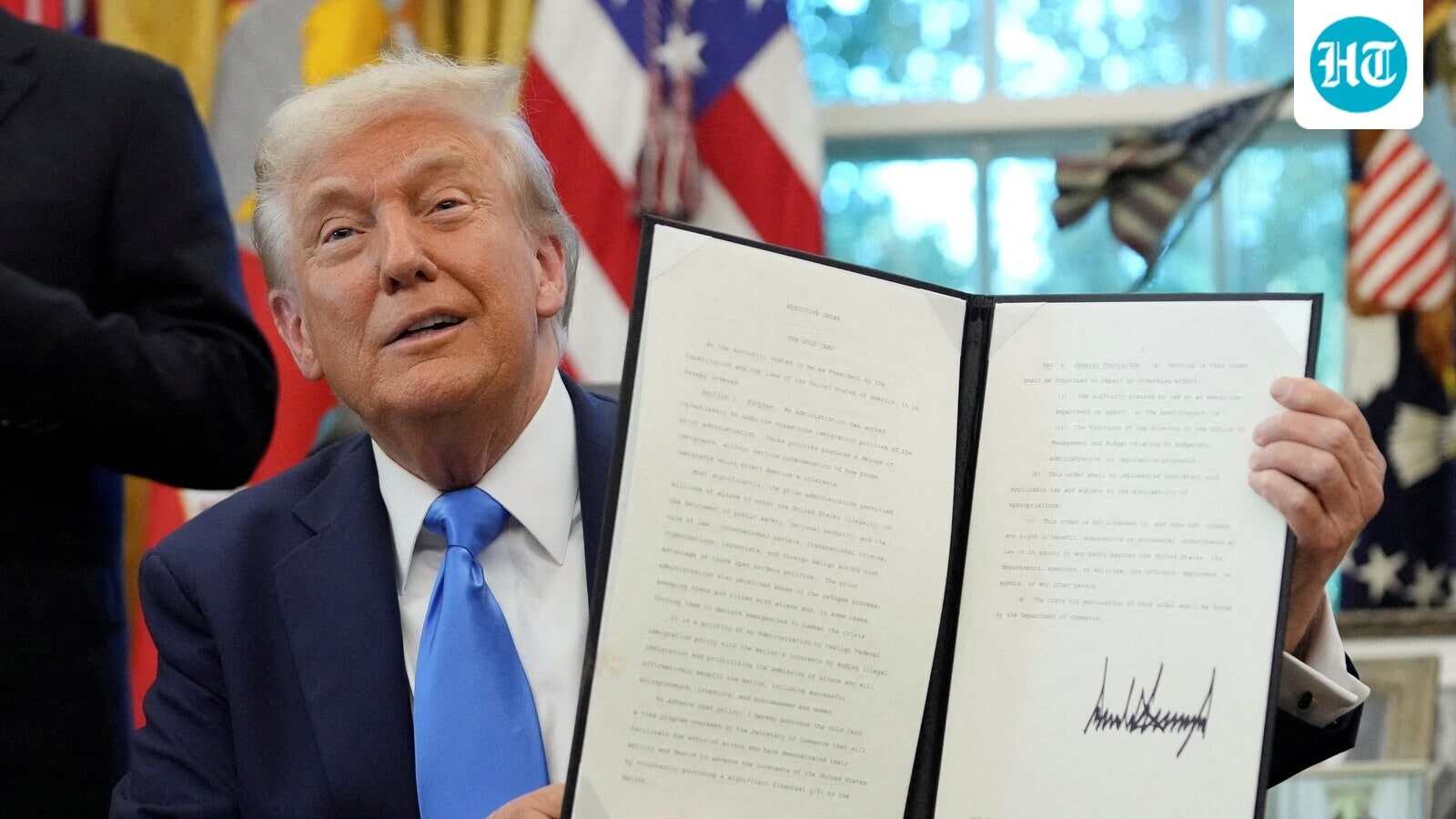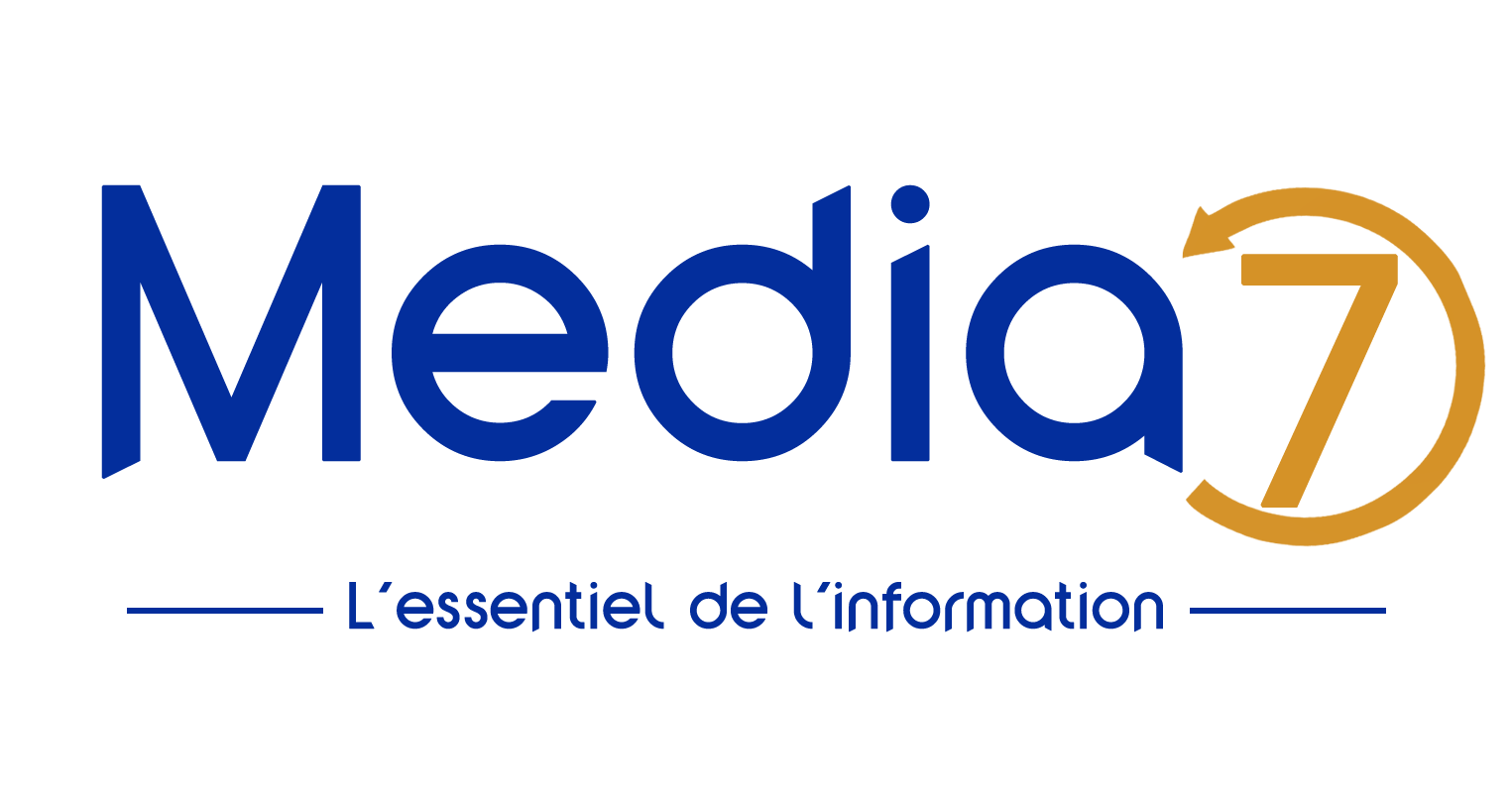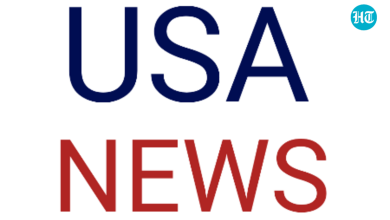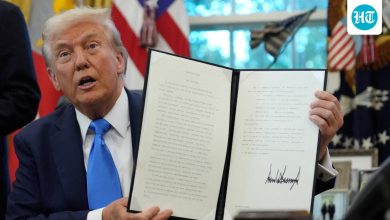Trump’s H-1B overhaul: Which tech giants will be worst hit by $100k fee hike?

The Trump administration imposed a startling USD 100,000 yearly cost on H-1B visas, which could have an immense effect on Indian IT and professional workers in the US.
U.S. President Donald Trump displays a signed executive order on gold card visa in the Oval Office at the White House in Washington, D.C., U.S., September 19, 2025. REUTERS/Ken Cedeno TPX IMAGES OF THE DAY(REUTERS)
Late Friday, President Donald Trump signed an executive order imposing the increased visa application cost and prohibiting H-1B employees from entering the country until they had paid the $100,000.
Who will be most affected?
Employers who have depended on the program to hire foreign workers, including corporate behemoths like Amazon, IBM, Microsoft, and Google, would be affected the most by visa hike. H-1B visas are already costly; depending on expedited status, they may cost anywhere from $1,700 to $4,500.
The employer usually views the fees as an expense for a business.
Also Read: From Microsoft to JP Morgan; Top tech firms issue urgent advisories for H-1B employees after Trump’s visa fee hike
The government said the change was meant to curb “systemic abuse” of the program.
With more 5,505 H-1B visas granted in 2025, Tata Consultancy Services (TCS) is the second-highest recipient after Amazon, according to the US Citizenship and Immigration Services (USCIS). The federal data reports that as of June 2025, 10,044 Amazon employees were on H-1B visas.
Microsoft (5189), Meta (5123), Apple (4202), Google (4181), Deloitte (2353), Infosys (2004), Wipro (1523), and Tech Mahindra Americas (951) are among the other leading beneficiaries.
The United States Customs and Immigration Service (USCIS) said in July that it obtained enough applications to meet the congressionally required regular ceiling of 65,000 H-1B visas plus the master’s cap of 20,000 H-1B visas for the US advanced degree exemption.
Here’s what Trump’s decree says
On Friday, Trump issued a decree titled “Restriction on entry of certain nonimmigrant workers,” which would limit the number of people who may enter the country as nonimmigrants unless they have paid USD 100,000 with their H-1B applications.
According to the proclamation, the limitation will end 12 months from its effective date on September 21, 2025, unless an extension is granted.
Tech and STEM fields
The proclamation stated that while overall STEM surged by only 44.5% between 2000 and 2019, the number of foreign STEM (science, technology, engineering, and math) workers in the US doubled from 1.2 million to nearly 2.5 million.
The percentage of foreign workers in computer and math-related jobs increased from 17.7% in 2000 to 26.1% in 2019. According to the report, misuse of the H-1B visa has been the main driver of this surge of foreign STEM workers.
IT firms and massive layoffs
Information technology companies have “prominently manipulated” the H-1B system, severely impacting American workers in computer-related industries, the declaration further stated. In the previous five fiscal years, the average percentage of IT workers in the H-1B program has increased from 32% in FY 2003 to nearly 65%. Additionally, IT outsourcing firms have become some of the most common H-1B employers.
Several American IT corporations have laid off their highly talented and qualified American workers while simultaneously hiring thousands of H-1B workers, according to data referenced in the proclamation. In FY 2025, one software firm received approval for more than 5,000 H-1B workers; at the same time, it reported a round of layoffs that laid off over 15,000 people.
Another IT company reported in July that it was eliminating 2,400 American employees in Oregon after being granted approval for approximately 1,700 H-1B workers in FY 2025. Despite being authorized for more than 25,000 H-1B workers since FY 2022, a third employer has laid off almost 27,000 American workers from its workforce since 2022. According to the proclamation, a fourth company apparently slashed 1,000 positions in February; while it was authorized for more than 1,100 H-1B employees for FY 2025.



